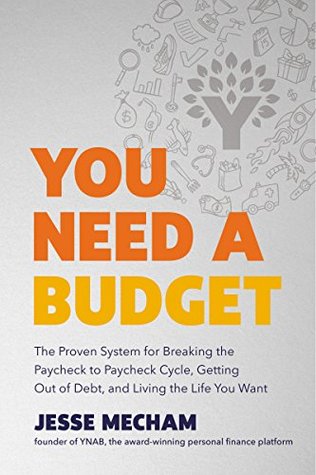More on this book
Community
Kindle Notes & Highlights
by
Jesse Mecham
Read between
November 20 - November 26, 2021
In truth, when we’re stressed about our finances, it’s because we’re not sure our money decisions are aligned with the life we want to be living.
The question we need to ask ourselves
isn’t Can I? or Should I? It’s What do I want my mo...
This highlight has been truncated due to consecutive passage length restrictions.
Imagine seeing your vacation fund grow while your waistline shrinks (double whammy!), or seeing your student debt disappear as your clutter subsides.
This is the driving force behind Rule Two: Embrace Your True Expenses. By breaking large, infrequent expenses into smaller, frequent milestones, you’re getting rid of “surprise” bills that tend to blindside us. Suddenly, they aren’t surprises.
But you’ll also need to change your approach to new credit card purchases to avoid future debt. This is true for everyone who uses credit cards—whether you carry a balance or pay your bill in full.
The question stops being Can I afford this? You can likely afford lots of things if you have the cash on hand, but that’s not the point. You’re now asking yourself, “Does this move me closer to my goal(s)?” You’re considering the future ramifications of your decision in a very concrete way, and spending becomes about real trade-offs: “If I buy these shoes now, it will take me an extra month to hit my vacation goal.” You’ll quickly find that, when looking at your spending through this lens, you make great decisions!
If you’ve overspent on eating out and need to take that money from a different priority, like vacation, that’s accountability. You are living the reality of what it means to spend more than you’d planned: you’re now that much farther from your vacation goal. It’s not a failure, but a reprioritization.
Perhaps you’d love to spend $400 a month on groceries for your family of five, but if you overspend every month, $400 just isn’t your reality right now. It could mean you simply have to budget more for groceries to meet your family’s needs. Or if you’re determined to make $400 work, you need to revamp your grocery game. Or if you decide to eat organic and local, you may suddenly have to do more than revamp—but that would be because you made that choice.
If you’re in debt the “age” of your money is actually in the negative. You spent your check before you even had it, either through credit cards or loans. But that doesn’t change how Rule Four works—the strategy is the same. Spend less than you earn and use the difference to wipe out your debts. Once you have cleared that hurdle (and you will), instead of putting that extra money toward your debt payment, you have the
luxury of letting it sit there and age. You’re no longer paying for what you spent in the past. Now you’re sending money to the future, so it’s sitting there waiting to be spent later.
Put another way: Without Rule Four, you’ve got a stack of bills waiting for money. With Rule Four, you’ve got a stack of money waiting for bills.
If you want to be very intentional about aging your money, you can save for it separately. Know you spend $4,000 in a typical month? Chip away at saving $4,000. When you hit your goal, use that money at the start of a new month instead of your upcoming paycheck. There—now your money is thirty days old.
My issue with debt is that it restricts your cash flow. It keeps money away from your priorities as you pay hundreds (sometimes thousands!) of dollars a month for something that’s already happened.
If you have kids, or plan to have them, give them the gift of taking debt out of the college-planning equation.
For this reason, we recommend paying off your lowest-balance debt first if you have multiple debts. We want you to shrink the number of payments you’re on the hook for each month so you have more freedom to decide how to use your money.
The point is to keep your spending habits the same even when your income increases. Don’t let lifestyle creep steal your raise by convincing you it’s okay to let loose a little. Stay focused on hitting your big goals.
Raising your income game: “I think a lot of people forget the income side of the equation. Sure, being frugal works, but hustling to squeeze dollars that aren’t there takes time and energy that you could put toward making more money. That’s one of the biggest lessons I’ve learned: cutting down expenses will help to a point. If you want to move quickly with anything financially, it helps to get your income up. You have to be strategic about it. Just as you put plans in place for your budgeting goals, put plans in place for your income goals.” Remembering the big picture: “Budgeting turned me
...more
If you’re carrying big debt balances and you’re serious about getting rid of them, you’ll need to make life changes. At the very least, you have to
break the lifestyle habits that got you into any consumer debt you may have.
“I try to squirrel money away in categories and expect the worst,” she says. “When I started budgeting, I put money in the car repairs fund so when my old Jeep broke down, I had money waiting.
I always put extra in my mortgage category so when repairs are needed, it is there. If something came up when I was working on debt payoff, I simply put the brakes on those payments and cash-flowed the expense.”
According to a U.S. Bank study, only 18% of high school seniors and undergraduate students feel their parents taught them how to manage money.


